We had a great breakfast (it included brownies) in our
little boutique hotel, the Kervanseray, which was an early 20th
century Ottoman judge’s home, and we walked briefly along the
waterfront
promenade among increasing crowds here to celebrate the Çanakkale Naval Victory Day. The Trojan Horse prop from the Brad Pitt
movie “Troy” was on display, along with a model of the historic site. Apparently the horse was donated to the town
as a sort of apology for filming none of the scenes for “Troy” in Turkey. We left town just ahead of a parade as hundreds
of soldiers and jandarmes were arriving (we think the Prime Minister of Turkey
was to be on hand) and counted our timing as lucky. We headed to Troy to fulfill one of Phyllis’
childhood dreams. It never entered her
head as a child play-acting the Trojan War that she would ever visit the
site. (While the rest of us were playing
cowboys and Indians, Phyllis the classical Greece child nerd, spent her time
pretending to be Hector in the Trojan
War…. seriously, not even Helen.) In any event, being there certainly was a highlight
of this trip for her.
It is not a highly developed site, and is very isolated on a
2-lane road in need of an upgrade for tourism.
As a consequence, this is not a heavily visited site, and we had the
place nearly to ourselves despite it being a beautiful spring day. (Of course, most Turks in the area were back
in Çanakkale
celebrating that national holiday.) Troy
was always thought to be mythical (or at least the product of Homer’s
imagination), so when a very determined and
wealthy German businessman /amateur
archaeologist followed his gut conviction in 1871 and found 9 levels of towns
within a remote hilltop on the windswept plains of western Turkey, the whole
scholarly world was astonished. Heinrich
Schliemann thought the Troy of the Iliad was the second level from the bottom
because he found gold artifacts there and it was clearly destroyed by fire, but
this level was eventually dated to 2500 B.C.
Scholars today are pretty certain the Homeric Troy was either Troy VI or
VII from around 1250-1000 B.C., but that does not detract from Schliemann’s
dogged persistence and the ultimate accomplishment. The Turkish establishment still seems annoyed
that a foreigner found the site and absconded
to Germany with a bunch of
artifacts that ended up in Russia after World War II (plus, there is a little
official ambivalence towards sites that are not wholly Turkish in
culture). Perhaps partially in response some
Turkish literature says that Schliemann dug carelessly. The information at the site itself was less
critical, but then much of the work is funded by German concerns.
It is certainly true that one would excavate differently nowadays,
but Schliemann was operating pretty early in the days of forensic archaeology
and careful techniques were not well established at the time. In any event, there was quite a bit to see
and marvel at,
especially since the nine separate levels were so obvious in
places. There were the foundations of
royal residences from Troy II, a stone ramp leading to the Troy II citadel, the
walls of a palace house from Troy VI, the “Schliemann Trench” where he dug down
into the mound, and a small amphitheater from Roman times. Part of the beauty of the site is the
incomplete nature of the excavation.
There is much work still to be done here; the site lay fallow for 50
years before excavation began again in 1988. You can leave much to the imagination and yet
feel the history surrounding you.
Phyllis was especially awestruck to stand on a mound that
was just outside the North gate and outer fortification walls with foundations
of an attached guard tower from the Troy VI/VII period, look out over the vast
plain surrounding the site and extending to the sea, and envision the area covered
with Greek warriors and ships in the distance.
It was pretty breath taking. Craig
was annoyed that the weird fake Trojan horse out by the parking lot was closed
for repairs.
Leaving Troy behind, we felt the need to settle in one place
for a couple of days, so we drove to a small town on the coast called Foça. We found a small historic pansiyon (the
Turkish equivalent for “pension”, i.e. a B&B) just a block from the
harbor. It was an old
stone house, and
in fact our host’s father was born in the upstairs bedroom in which we stayed. We walked to a fish restaurant recommended by
our host for dinner, only to hear a pouring rain on the roof shortly after we
arrived. Our conclusion before we left the
pansiyon that we need not bring our umbrellas seemed a little hasty. Fortunately, we lingered long enough over our
meal that it had slowed to a drizzle for our walk back to the pansiyon. We continue to have spotty weather, but it
keeps the crowds away!

 Foça, İzmir, Turkey
Foça, İzmir, Turkey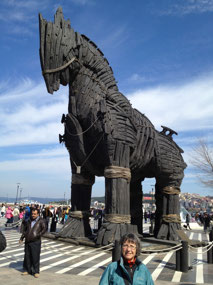
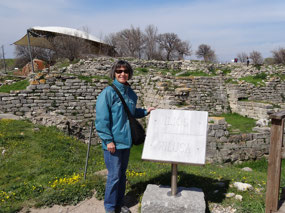
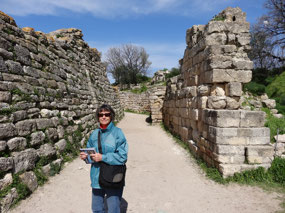
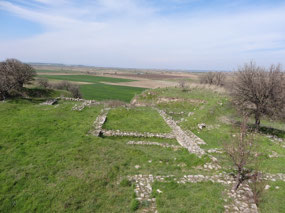

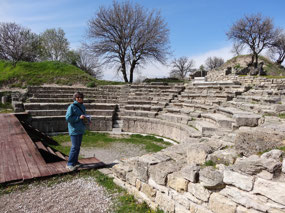
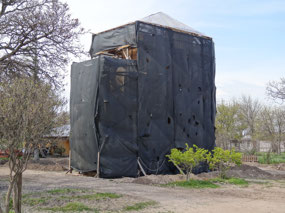


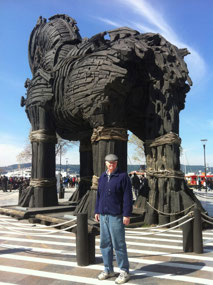
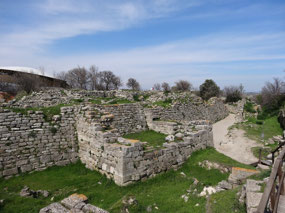
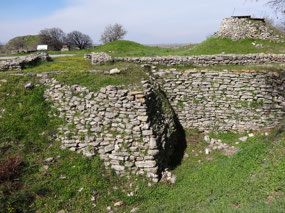
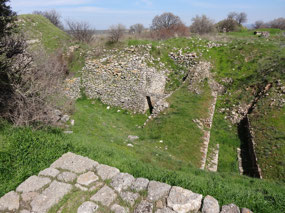
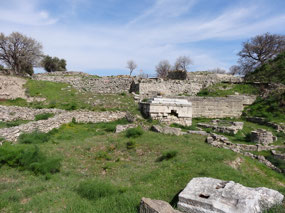
2025-05-23